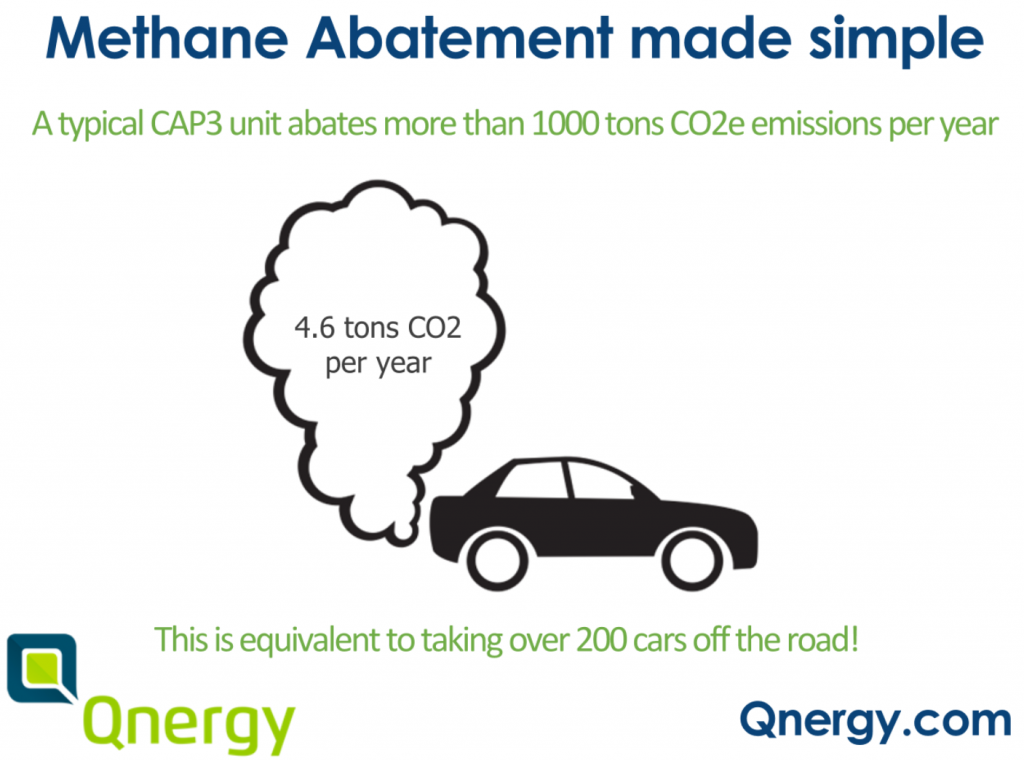Many companies tout their products as being low emission, zero emission, hybrid and things of that nature. Over the past number of years we’ve certainly seen a movement towards hybrid technology in many facets of life that we assume will make our environment cleaner over time.
That’s a fair assumption, isn’t it?
Unfortunately, this isn’t always the case particularly in the case of oil & gas applications.
The devil is in the details as they say and a full understanding of what you’re buying is needed. Specifically, what is the true level of emissions and total carbon footprint of your chosen application?
Comparing apples and apples
Marketing hype aside, you need to look beyond words before committing to a particular type of technology that you think will not only save you money but reduce your company’s carbon footprint too.
Here’s a specific example regarding the Compressed Air Pneumatics (CAP3) technology from Qnergy that OilPro represents in Canada. It replaces methane emission from gas pneumatic devices with compressed air.
The difference between the CAP3 and conventioinal internal combustion engine (ICE) style generator air packages is that the ICE engines generate up to 100x greater emissions than the PowerGen’s Stirling engine.
Many packagers mitigate those emissions by hybridizing so they can claim to use it only occasionally (i.e. when solar isn’t enough) and rely on solar the rest of the time. That works great in theory, but the reality is that the more inter-related systems depend on each other the lower the reliability of these mission critical systems.
Thus they can call it a hybrid system. The same thing happens with fuel cell hybrid systems, which due to their limited core service lifespan are forced to hybridize.
The problem with “hybrids” is actually a series of issues that arise that you should know about before investing.
The full picture on hybrid technology
- Hybrids require much larger battery packs to provide the 7-day autonomy typically designed into a system.
- They require much larger battery banks.
- Hybrids cycle the battery banks much deeper which drastically shortens lifespan and increases replacement cost.
- Large solar arrays are magnets for vandals and thieves because they can be used on RV’s and homes. Just look at your company’s operations budget replacement battery and solar panel breakout costs.
- Batteries, chargers, solar panels and interconnecting wiring have their own significant carbon footprints.
Once you begin to ask about the total carbon footprint over the lifespan of the product, the total cost to you and the environment becomes clearer. Unfortunately that doesn’t always make it onto the bid spread. That shouldn’t stop you from making rational decisions that preserve your capital outlays over the long term.
What is methane abatement?
Methane abatement in oil and gas refers to the process of reducing methane emissions that occur whether by accident or design, in many applications. Modern products can be designed to mitigate methane emissions to help reduce your total emission output.
This is where CAP3 comes in:
“CAP3 is an innovative product that replaces the methane emissions of pneumatic devices. Qnergy’s proven PowerGen Stirling engine is the heart of the CAP3 solution, efficiently combusting normally vented methane, while economically providing reliable electric power and clean, dry instrument air. The CAP3 system conserves valuable instrument gas and eliminates the “wet-gas” issues associated with operating low-bleed pneumatic devices.”

Source: Qnergy
To learn more about methane abatement, check out this article from Qnergy called Why Invest in Methane Abatement?
Want to learn more about how to lower your total carbon footprint with remote energy?
Visit our PowerGen page to learn more or call us directly at 403 215 3373 or contact us by email at [email protected] for more details.
You can also view our article What Is Your Total Carbon Footprint (And What To Do About It) for more information.
